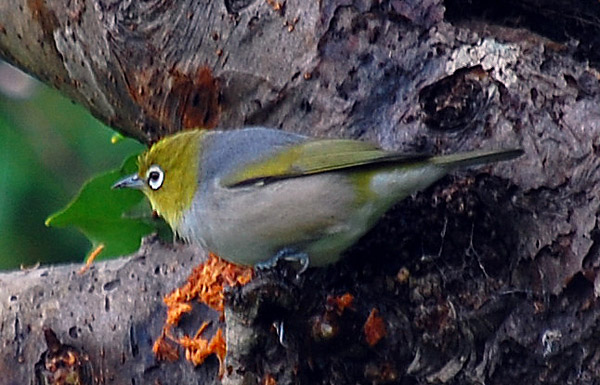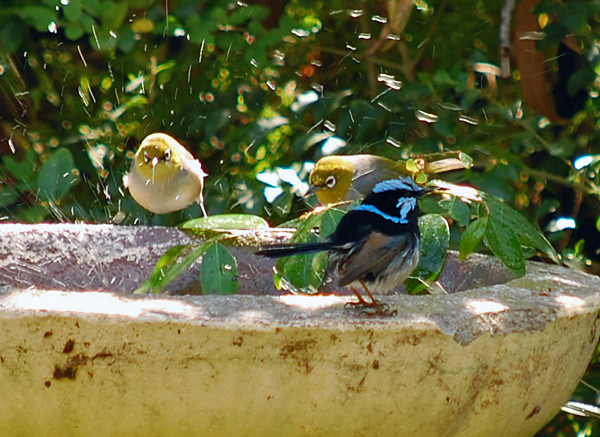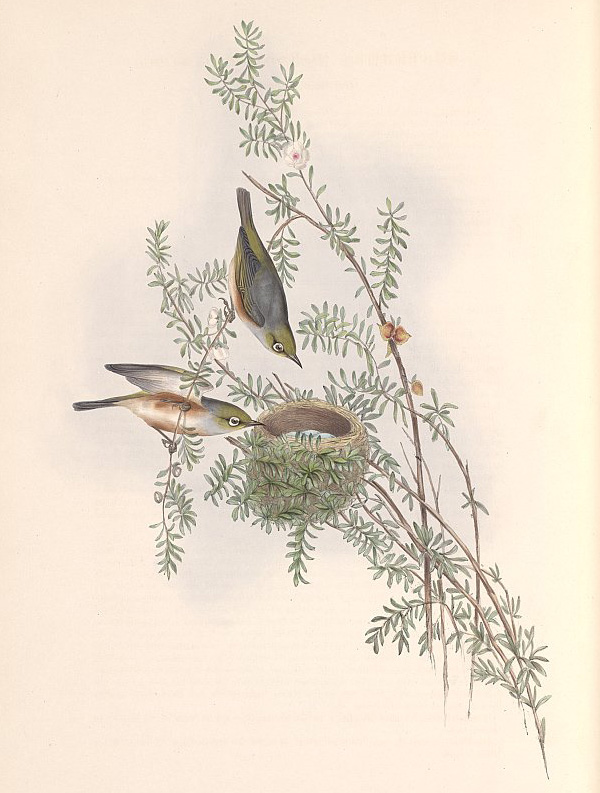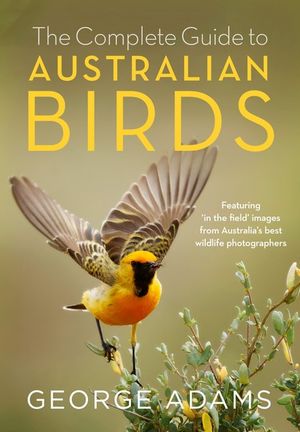Silvereye
Zosterops lateralis
Other Names: Silvereye (Grey Backed)
Family: Zosteropidae (White-eyes, 3 species in Australia)
Size: 12 cm
Distribution: Around the coasts of Australia, mainly in the Southeast, up to several hundred km inland in the Southeast.
Status: Common
Habitat: All types, orchards, gardens, everywhere really
References: Simpson and Day, Reader's Digest
Silvereyes are usually seen in numbers of at least 10 birds and sometimes a lot more. Like most small birds they do not stay in the one place very long. They are lovely birds and I always feel happy when I see them.

Photo: Blaxland, Blue Mountains NSW
The photo below shows two Silvereyes playing in the birdbath with a male Superb Fairy Wren.

Photo: Blaxland, Blue Mountains NSW

Artwork: John Gould, 'The Birds of Australia', 1848. Original Scanned Image.
Some Birdwatching Resources
|
 NEW: The Complete Guide to Australian Birds, by George Adams.
NEW: The Complete Guide to Australian Birds, by George Adams. This is another of the newer ones (published in November 2018) that I bought recently (June 2020). It's got photographs rather than drawn pictures of the birds. They're really good quality photos. 10 or more years ago, the Australian bird field guides with photographs definitely weren't in the same class as the ones with hand-drawn pictures, but that seems to have changed. Now I think it's more a matter of personal preference. I imagine that the massive increases in availability of long-zoom-distance digital photographic equipment has made it much easier for there to be better quality photos of birds.
This book has colured strips down the outside of each page so you can find the different types of birds easily, which I really like.
Purchase from Australia (The Nile)
Purchase from Australia (Fishpond)
Purchase from Amazon.com (USA Site)
Purchase from Amazon.com.au (Australian Site)
| See AlsoAustralian Bird Field Guides
Return to Australian Birds
Return to Site Map
Share This Page
birds
Content is copyright © Survive.au 2005-2025 All Rights Reserved. Terms of Use. Definitely read the disclaimer before trying anything from this website, especially including the practices and skills. This website uses affiliate links – this doesn't cost you any more, but I get a commission on purchases made through the website. As an Amazon Associate I earn similarly from qualifying purchases.
|





